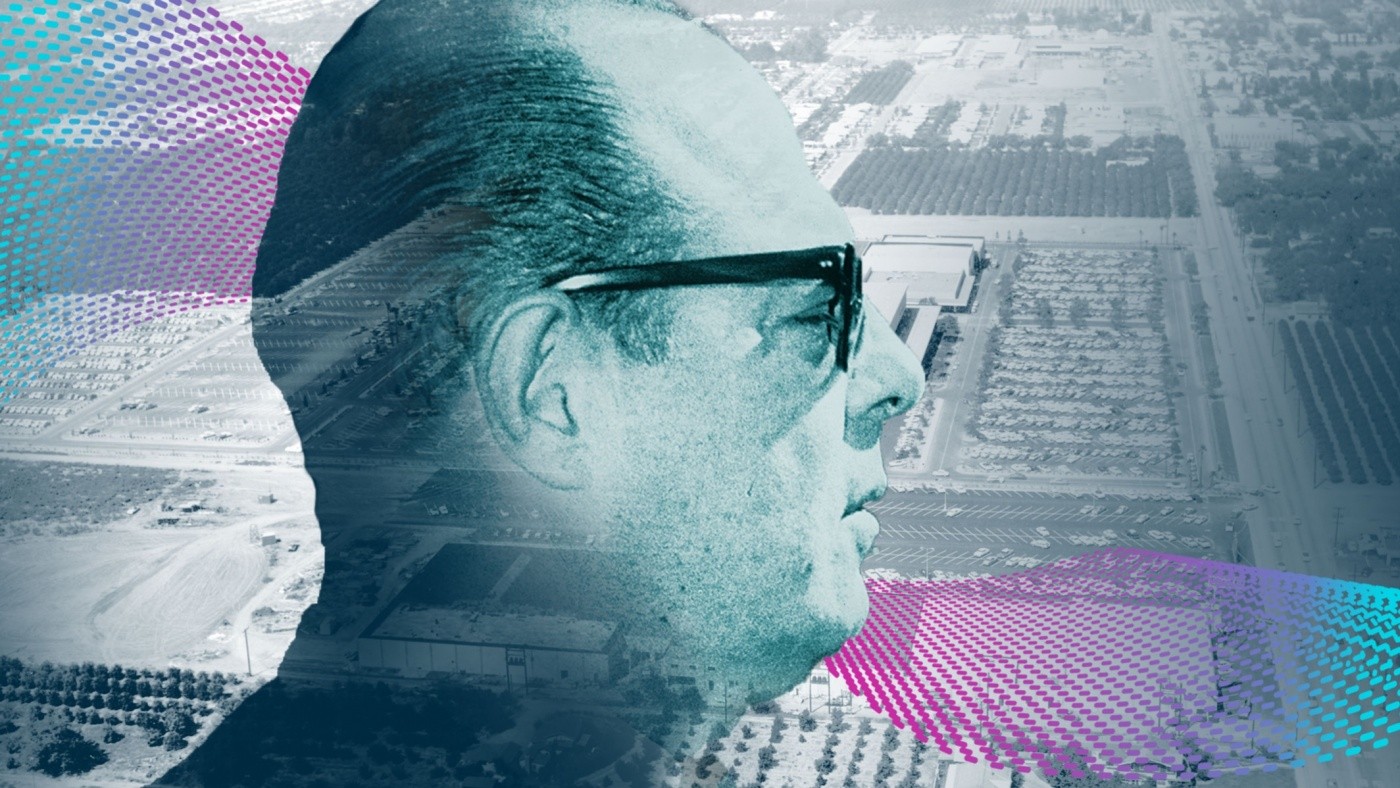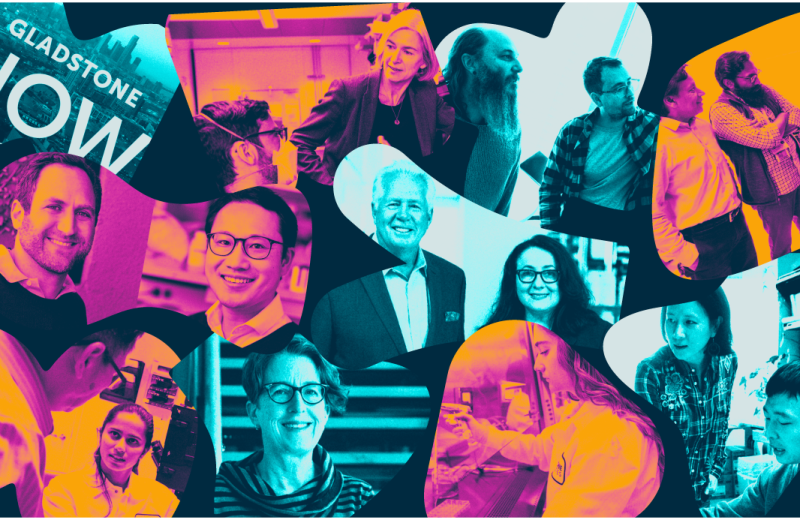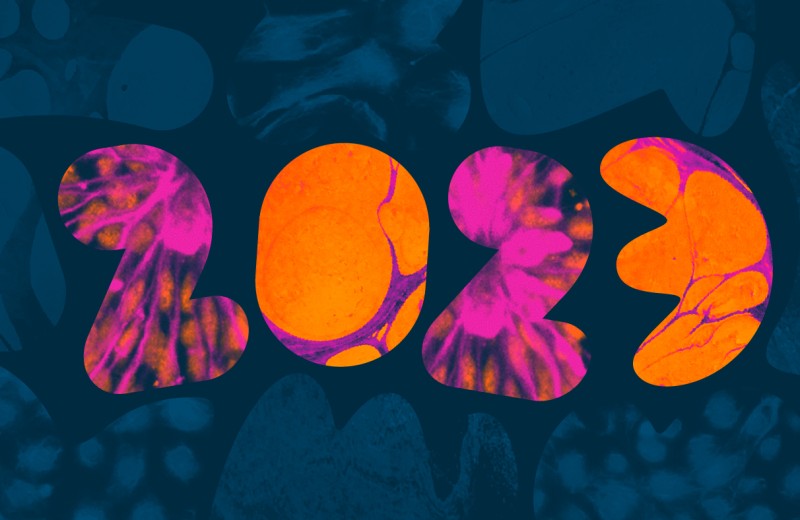Gladstone NOW: The Campaign Join Us on the Journey✕

Gladstone’s namesake left a lasting legacy after humble beginnings.
Jack David Gladstone was the self-made American man, a Horatio Alger immigrant hero for the 20th century with a sprawling, if enigmatic life story. Orphaned as a young boy, he emerged later in life as a true pioneer in real estate development before generously bequeathing a trust that has grown dramatically over the past 40 years, supporting visionary life science research to tackle unsolved diseases and improve the global human condition.
His posthumous generosity continues to sustain the Gladstone Institutes’ lofty mission, netting astonishing successes across multiple disciplines, much of it beyond the imagination of the forward-thinking Gladstone, who reinvented his life with a different name on another continent.
“His will directed the trustees to create scholarships for medical students interested in vascular research, and that’s about it,” says John Peck, director of Human Resources operations at the Gladstone Institutes, and the foremost authority on the man for whom the institution is named.
Peck researched Gladstone’s life after reading a history about the organization that included very little information about the man.
“The thing that struck me was that almost nothing was known about his ancestry,” Peck says. “It seemed amazing to me that we had this prominent research institution named after a man we knew almost nothing about, and that stuck in my mind and sparked my curiosity.”
Rediscovering Gladstone
Most of what we now know about J. David Gladstone is thanks to the work of Peck, who has been at the institution for 20 years, although company history was never part of his job description.
A few years ago, Peck researched his own family’s background, which inspired him to use his well-honed research skills to examine Gladstone’s life.
The result of his year-long search is the recognition of a richer, fuller, more interesting, and well-rounded Jack David Gladstone—a man who overcame great obstacles to become a giant in his profession, with a lasting legacy aimed at improving the lives of millions.
“I think Mr. Gladstone would be very proud of what his donation has been able to accomplish,” says Peck. “He’d be proud, I think, that he continues to impact lives well beyond his own.”
Overcoming Tragedy
Gladstone overcame early family tragedies in England to become a leading real estate developer decades later in Southern California, where he earned his fortune and a measure of fame by creating the region’s enclosed shopping malls.
He was born as Jacob David Goldstein on December 5, 1909, at home in Hackney, a district of London, to Michael Goldstein and Maria Cosky. Jacob was 4 when his father, age 34, died of heart failure during surgery in October 1914. He was not yet 8 when his mother, 32, was found dead of heart failure on a train in November 1917.
Young Jacob lived for a few years in London with his Uncle Harry and Aunt Miriam, his father’s brother and sister-in law, before shipping out for Canada in 1924, when he was 14, to live with his mother’s brother, Morris Cosky. Jacob spent the next 12 years living in Toronto with his Uncle Morris and Aunt Annie and their children.
“We can only speculate why Harry decided to send young Mr. Gladstone to live with his Uncle Morris,” Peck writes in the informal report he produced from his research, Discovering Gladstone. “Perhaps there was more opportunity in Canada, or less anti-Semitism. Britain was suffering a period of economic depression in the 1920s. Canada, on the other hand, was experiencing an economic boom.”
After attending university in Montreal, Gladstone (who was still Goldstein at that time) returned to England for a short time, “although it is not clear why,” Peck writes. Though his travel documents list his occupation as “salesman or sales agent.”
Bound for America
Gladstone had moved to the US from England in 1939, shortly before the outbreak of World War II in Europe, making his way to Los Angeles and another uncle on his mother’s side.
In 1942, he would change his name from Goldstein to Gladstone. In part because other members of his family had changed their name to Gladstone, but also because he was frequently confused with another individual named Jacob David Goldstein who had been involved in a high-profile murder and bribery case.
It wasn’t until the mid 1950s that public knowledge of Gladstone really grew as he entered the real estate development business in retail-hungry Southern California. He developed strategic partnerships with accountant George Carlson (who financed Gladstone’s early ventures) and B.L. Metcalf (the Los Angeles contractor who designed and built Gladstone’s early shopping centers).
As the Los Angeles area was exploding with more people who wanted more shopping options, Gladstone, “pioneered the concept of the indoor regional shopping center, or mall, that featured air conditioning, large public spaces, and large retailers, such as department stores, anchored at both ends,” notes Peck in Discovering Gladstone.
Gladstone also became particularly skilled at obtaining leases from prospective store tenants and then using those leases to get building loans. Always comfortable in front of people and making a pitch, “what he did better was listen,” Peck writes. “He listened to the community that he wanted to build in, frequently hosting dinners with community members to listen and incorporate their needs.”
Building a Legacy
He became a master at building community support through public relations and public education campaigns. While other developments were rejected because of community opposition, Gladstone’s permits were routinely approved.
To build support for a shopping center in Fontana, California, he created a community space, on his dime, with supervised childcare serving shopping mothers, then led a fundraising effort to build a new YMCA in the area. Another time, he donated space in a shopping center to the Boy Scouts of America.
In the busy 15 years that Gladstone was in the public eye as a leading retail developer, he oversaw the grand opening of one major retail center after another, becoming a sought-after speaker by various trade groups and being heavily involved as a leader in a group called the International Council of Shopping Centers.
He also had a passion for education, designing a curriculum for shopping center management and establishing internships for students. So, it should be no surprise that J. David Gladstone, who died on June 14, 1971, at home in a swimming pool accident, wanted his estate to be used to support education.
In his will, Gladstone named three trustees: Richard S. Brawerman and Richard D. Jones, both lawyers, as well as David Orgell, a prominent jeweler and businessman in Beverly Hills, and Gladstone’s first cousin. Gladstone directed the trustees to create a foundation that would award scholarships to students researching heart and vascular disease.
“The donation was meant to support medical students interested in research, but we knew we could translate that idea into a broader vision and achieve far more than Gladstone had ever envisioned,” says Jones, who was Gladstone’s real estate lawyer for several years.
Realizing the growth potential, Jones and his fellow trustees petitioned the probate court to amend the trust, changing it from a granting institution to a medical research organization, and that’s what happened in December 1972, setting the stage for what would eventually become the Gladstone Institutes, where a bold tradition of cutting-edge research has become part of the overall DNA.
“Mr. Gladstone took risks, he was forward thinking, and the trustees have followed his lead with each of their decisions,” says Deepak Srivastava, MD, president of the Gladstone Institutes. “Forty years later, that spirit continues at Gladstone as we strive to honor our rich history. We encourage each other to be curious, take risks, and choose to pursue ambitious goals.”
This story is the first in a series that will uncover Gladstone’s rich history, as a way to celebrate the institution’s 40th anniversary in 2019. Read more.
Support Discovery Science
Your gift to Gladstone will allow our researchers to pursue high-quality science, focus on disease, and train the next generation of scientific thought leaders.
10 Highlights of Gladstone Science in 2024
10 Highlights of Gladstone Science in 2024
Revisit some of Gladstone’s most important stories from the past year.
History2024 Year in Review
2024 Year in Review
Revisit some of the most impactful moments that defined 2024.
HistoryA Year of Scientific Achievements at Gladstone
A Year of Scientific Achievements at Gladstone
Highlights from 2023
History



